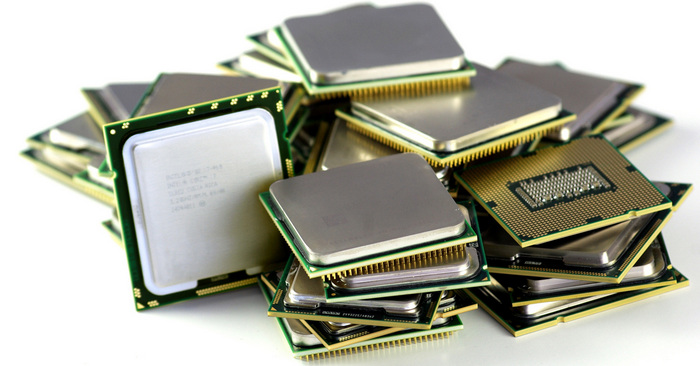Intel Processor Mega Launch - Series Enrichment

Over the past two weeks, Intel has announced the release of as many as 35 processors in almost all segments: desktop, mobile, and ultra mobile ( second-generation Intel Xeon Scalable processors for servers were launched a little earlier). In order not to stand up several times, we decided to bring all the new items into one post. Under the cut - review plates with the main characteristics, a brief information about the new functionality, as well as news that intrigued ourselves.
Chronologically, the first information appeared on four new Amber Lake Y processors (in their youth who had the name Core m) - this is the eighth generation. They are still positioned as “Core for the smallest”, have a low frequency and number of cores, and TDP for all new products is only 7 watts.
| Base frequency, GHz | Max. single core frequency, GHz | Cores / Threads | Kesh, MB | |
|---|---|---|---|---|
| i7-8510Y | 1.8 | 3.9 | 2.4 | four |
| i7-8500Y | 1.5 | 3.9 | 2/4 | four |
| i5-8310Y | 1.6 | 3.9 | 2/4 | four |
| i5-8210Y | 1.6 | 3.9 | 2/4 | four |
| Base frequency, GHz | Max. single core frequency, GHz | Cores / Threads | Kesh, MB | |
|---|---|---|---|---|
| i9-9980HK | 2.4 | 5.0 | 8/16 | sixteen |
| i9-9880H | 2.3 | 4.8 | 8/16 | sixteen |
| i7-9850H | 2.6 | 4.6 | 6/12 | 12 |
| i7-9750H | 2.6 | 4.5 | 6/12 | 12 |
| i5-9400H | 2.5 | 4.3 | 4/8 | eight |
| i5-9300H | 2.4 | 4.1 | 4/8 | eight |
A little more about Thermal Velocity Boost
Intel Thermal Velocity Boost (TVB) is a new feature in top-end Intel Core processors starting in the eighth generation. It automatically raises the clock frequency of one or several cores at the right time more than just using Intel Turbo Boost 2.0 technology. The value of the added frequency depends on how much the operating temperature of the processor is below the maximum. The maximum frequency of processor cores with Intel Thermal Velocity Boost technology enabled is achieved at an operating temperature of no higher than 50 ° C, in addition, there is a balance of power in Turbo mode. Over time, the frequency may decrease with increasing CPU temperature.
')
Together with the six processors mentioned above, the models Coffee Lake Refresh for desktop PCs were presented - 25 pieces at once: Intel Core i9, i7, i5, Celeron and Pentium Gold. Most new products in the middle and lower price segment. Characteristics gradually decrease from top to bottom - all of this is also familiar to us. Let's reduce in a plate on one model from each group.
| Base frequency, GHz | Max. single core frequency, GHz | Cores / Threads | Kesh, MB | |
|---|---|---|---|---|
| i9-9900 | 3.1 | 5.0 | 8/16 | sixteen |
| i7-9700 | 3.0 | 4.7 | 8/8 | 12 |
| i5-9600 | 3.1 | 4.6 | 6/6 | 9 |
| i3-9350K | 4.0 | 4.6 | 4/4 | eight |
| Pentium G5620 | 4.0 | - | 2/4 | four |
| Celeron G4950 | 3.3 | - | 2/2 | 2 |
As for the next plans, that is curious information. It is unofficial - we essentially do not publish this in a blog. But to draw your attention we have the right. An article in the NotebookCheck portal provides tables with the characteristics of future Intel mobile processors of the Comet Lake-G and Comet Lake-U families - they should see the light at the end of the year. Immediately striking strange indexes (such as Intel Core i7-1065G7) and unusually small base frequencies. Have you ever seen an Intel Core with a frequency of less than 1 GHz? This is all very interesting - we are waiting for an official reason to talk.
Source: https://habr.com/ru/post/450658/
All Articles